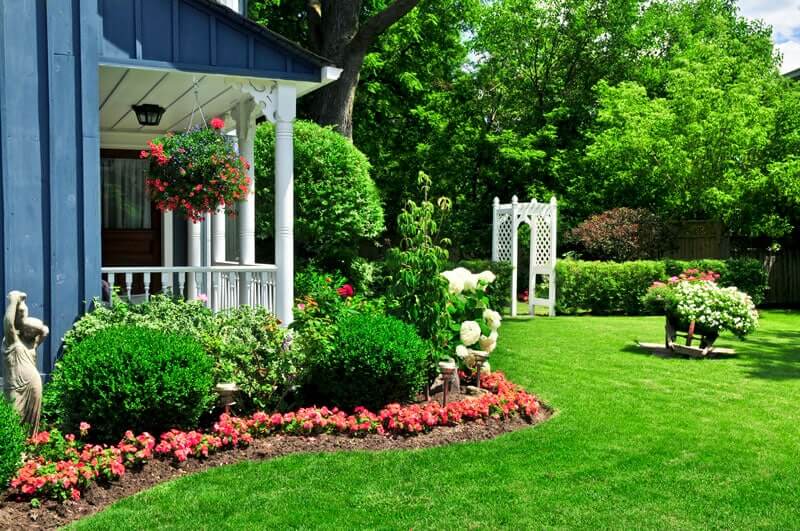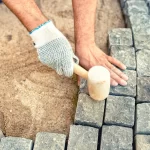Imagine stepping out into your own backyard – a space that is aesthetically pleasing and environmentally conscious. This might seem like a distant dream, but the reality of creating a beautiful landscape that also promotes sustainability is closer than you think. The world of landscaping is gradually shifting towards practices that foster biodiversity and reduce environmental footprints. It’s not just about creating a visually stunning space; it’s about taking responsibility for our planet and contributing towards its well-being. Can you feel the shift? This change is happening right now, and you, too, can be a part of it.
The interest in environmentally friendly designs is burgeoning more than ever before. People around the globe are realizing that a gorgeous garden doesn’t have to come at the expense of the environment. We can cultivate spaces that cater to our desire for beauty while supporting the rich tapestry of biodiversity. Our gardens can become a refuge for the birds that fill the morning air with their songs, the bees that diligently contribute to the circle of life, and the countless other creatures that find solace in the green. Doesn’t the thought of creating such an impactful space stir something within you? It’s time to embrace this increasing interest and transform our outdoor spaces into sustainable havens.
Understanding the Key Trends of Sustainable Landscaping
Let’s embark on a journey through the verdant world of sustainable landscaping. As we step into this realm, we find ourselves amidst a wave of progressive trends with environmental consciousness.
As we navigate further, we witness the majesty of low-carbon landscaping, a conscientious effort to reduce our carbon footprint while maintaining an awe-inspiring outdoor space. Our journey also introduces us to drought-tolerant plants, a wise selection of hardy and beautiful vegetation that requires minimal water – a subtle yet significant nod to conservation. We continue our exploration by creating spaces for local wildlife, inviting a symphony of birdsongs, a buzz of pollinators, and a playground for critters in our backyards. Just imagine that, right outside your patio doors!
In this expedition, we also encounter the rising popularity of recycled and reclaimed materials. Old wooden crates metamorphose into charming garden benches, discarded glass bottles lighting up pathways as solar lanterns – isn’t there art in giving waste a meaningful second life?
Additionally, we’ll delve into the concept of entangled designs, a strategy that aims to create continuity and defined spaces in our outdoor areas. This ingenious method ensures our green spaces are visually cohesive, offering a smooth, natural flow that is as pleasing to the eye as it is to the environment.
For a clearer picture, let’s lay out these trends that are paving the way for sustainable landscaping:
- Immersive gardens that blend human habitation with natural spaces
- Low-carbon landscaping techniques that aim to reduce our carbon footprints
- Utilization of drought-tolerant plants for the conservation of water
- Creating habitats for local wildlife in our gardens
- The increasing use of recycled and reclaimed materials
- Entangled designs for visual continuity and defined outdoor spaces
Exploring these trends is not just about beautifying your outdoor space. It’s about starting a dialogue with nature and learning to live harmoniously with it.
Creating Your Own Sustainable Home Landscape
Native Plants
Native plants are a bit like the old friends of your regional environment; they’ve adapted to the local conditions over centuries. This means they require less maintenance and are more resilient to local pests and diseases. But remember, every good story has a little caution. Some natives can be a bit too friendly, spreading quickly and potentially overpowering other plants in your garden. So, choose wisely; your garden will be a delightful portrait of biodiversity.
Living Barriers
Have you ever thought about turning your fences into living walls or hedges? It’s an incredible way to invite wildlife into your yard. These ‘living barriers’ serve as a natural fence and a thriving habitat for beneficial insects, birds, and small mammals. Imagine having a morning coffee with the gentle hum of bees, the melodious chirping of birds, and the occasional squirrel scampering around – doesn’t it sound enchanting?
Trees
Next, let’s think about trees. But not just any trees; we’re talking about deciduous trees. These are the plant world’s chameleons, providing cool summer shade while letting in warm sunlight during the winter. It’s a natural, energy-efficient way to regulate temperature at home.
Green Hardscaping
Speaking of energy efficiency, how about exploring the realm of ‘green hardscaping’? This involves using permeable pavers that allow water to seep through, reducing runoff and recycled materials to lower your landscape’s carbon footprint.
The journey to a sustainable home landscape is not just about going green. It’s about embracing nature, understanding its rhythms, and contributing to its preservation. And while you’re at it, you’re also creating a haven of beauty right in your backyard, a testament to the fact that sustainability and elegance can indeed go hand in hand.
Conservation Measures for Your Landscape
Let’s talk about saving time, money, and the planet through conservation measures in your landscape. With a few smart practices, you can significantly conserve precious resources. One such trick is letting your lawn go dormant during the summer heat. It’s as if your lawn takes a little vacation, using this time to conserve water. And when the cooler, wet weather returns, so does its lush greenery. This way, you’re saving water and cutting down on your water bill!
Another great conservation strategy involves the use of organic mulch. Just picture it as a blanket for your soil, preserving moisture, preventing the growth of weeds, and adding a neat, finished look to your landscape. But the magic of mulch doesn’t stop there. Over time, it breaks down, providing vital nutrients to your plants. Essentially, it’s a win-win situation for your garden’s health, wallet, and environment.
But these are just a few eco-friendly conservation techniques at your disposal. To give you a better picture, let’s dive into a table detailing various measures you can take and their respective benefits.
| Conservation Measures | Benefits |
| Using drought-tolerant plants | Less water usage, lower maintenance |
| Installing rain barrels | Conservation of rainwater, reducing water bills |
| Integrating composting practices | Reducing waste, creating nutrient-rich soil conditioner |
| Using solar-powered lighting | Saving energy and reducing electricity bills |
Conservation isn’t just a buzzword. It’s a commitment to protecting our earth, a pledge that begins right in our backyards. With these measures, you’re creating a sustainable landscape and contributing to a sustainable future.
Innovative Practices for a Healthier Environment
Imagine your garden coming alive every time it rains, capturing each precious drop of water for a sustainable future. That’s the magic of rainwater harvesting and rain gardens, two innovative landscaping and design practices that are transforming home landscapes while making them more environmentally friendly. Let’s delve into how these practices create healthier surroundings, enhance the beauty of your landscapes, and lead to a sustainable environment.
Rainwater harvesting is like a savings account for your garden. It involves collecting rainwater in barrels or other storage containers and reusing it for gardening. This conserves water and reduces dependency on treated tap water, offering your plants a more natural hydration method. So, the next time it rains, envision those droplets as precious gems, fueling the life in your garden.
Now, let’s move on to rain gardens, a natural wonder in its own right. Picture a shallow, sunken garden that springs to life during a downpour, capturing runoff water from roofs, driveways, or other hard surfaces. The rain water garden holds onto this water, allowing it to slowly soak into the ground rather than flow into storm drains. This reduces stormwater runoff, promotes groundwater recharge, and filters pollutants. Just visualize it as your garden putting on a water ballet every time it rains.
Both of these practices significantly contribute to a healthier, more sustainable environment. They conserve water, reduce stormwater runoff, and promote the local ecosystem, all while adding a unique aesthetic appeal to your landscape. It’s like shaping a better world, one droplet at a time.
FAQs About Sustainable Landscaping
You’ve got questions; we’ve got answers. Here are some common inquiries we receive about sustainable landscaping. Let’s demystify the process and shed light on how to create a more sustainable environment in your backyard!
What are the benefits of using native plants in my garden?
Native plants are like old friends in your garden. They’re acclimated to the local climate and soil conditions, so they require less watering and care than exotic species. Plus, they support local wildlife, creating a balanced and biodiverse ecosystem in your garden.
How can I create a wildlife habitat in my garden?
Creating a wildlife habitat in your garden is about providing food, water, and shelter for local creatures. Use plants that produce berries, seeds, or nectar, install a water feature, and leave some areas of your garden a little wild for shelter. Before you know it, you’ll have birds, butterflies, and other wildlife visiting your personal paradise.
What is ‘green hardscaping,’ and why is it important?
Green hardscaping is about creating outdoor living spaces while considering the environment. It involves using materials that allow water to permeate the ground (like permeable pavers) and repurposed or recycled materials. It’s important because it reduces runoff, promotes groundwater recharge, and limits resource consumption.
How can I conserve water in my garden?
Conserve water by planting drought-resistant species, installing a rain barrel for watering, and letting your lawn go dormant during dry spells. Consider drip irrigation systems that deliver water directly to plant roots, reducing evaporation.
How does a rain garden work?
A rain garden is a sunken area in your landscape that collects rainwater from roofs, driveways, or other hard surfaces, allowing it to soak slowly into the ground instead of running off into storm drains. This reduces stormwater runoff, prevents erosion, and can help filter out pollutants from water.
Remember, sustainable landscaping isn’t just about making your garden look great. It’s about working in harmony with nature to create a healthier environment for everyone. Happy gardening!






